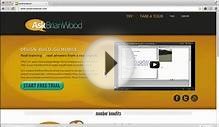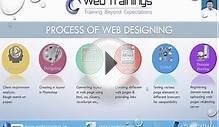
This course consists of 5 lessons. The first one is an overview of responsive design and introduces the way you’ll need to shift your thinking as you go from desktop first design, to responsive design. Lessons 2, 3, 4 and 5 will cover the important theoretical concepts of responsive design, and include plenty of hands-on exercises implementing what you’ve learned.
Lesson 1 - Why Responsive?
What is responsive web design and why is it important? What kinds of devices should we be targeting with our design? How can we best leverage the different capabilities of each device to provide great experiences to users? You’ll also make sure that your development environment is ready to go.
Topics covered:
Lesson 2 - Starting Small
The best way to get started is to start small and build up. In this lesson, we’ll cover the key components that make a site great on a small screen, including setting the viewport, adding content and sizing the content to the viewport. You’ll start the home town site project, by making sure that it looks good on a small screen.
Lesson 3 - Building Up
Once you’ve got a page optimized for small screens, it’s time to start thinking about how they’ll look on larger screens. Learn how to use CSS media queries to add breakpoints that change the layout depending on the screen size or other device characteristics.
Lesson 4 - Common Responsive Patterns
Now that you’ve got the basics of responsive design down, you’ll learn about and practice some of the common layout design patterns used across sites. You’ll also iterate on the home town site project, creating breakpoints for tablet and desktop layouts using the patterns from this lesson.
Lesson 5 - Optimizations
Learn strategies for minor breakpoints used to adjust the margins or padding on an element, or increase the font size to make it feel more natural in the layout. You’ll also learn about strategies for dealing with tables and optimal text readability. At the end of the lesson, you’ll iterate for the last time on the home town site, adding minor breakpoints to really make the experience stand out.
INTERESTING VIDEO












